If you’re like a lot of people, you may not know what to do with your young horse from when you weaned him until he’s ready to start under saddle. You’ve taught your foal all of the exercises in the Foal Training Series, and now you’re not sure what more you can do with him before he’s ready to start under saddle.
Here’s the good news: There are a lot of things you can do with your yearlings to help develop their skills and build their confidence. The key is giving them a purpose to move their feet forwards, backwards, left and right. All of the exercises you’ve taught your young horse from the Foal Training Series can be put into practice over obstacles.
Think of an obstacle course like a big playground for your horses. It keeps things interesting for them, keeps them guessing about what you’re going to ask them to do and makes them responsible for their feet. Whenever you give a horse a purpose, they enjoy their jobs so much more.
While it’s certainly nice to have a professionally built obstacle course to use, you don’t need anything as fancy as the obstacle course I have here at the ranch. You can make obstacles out of materials you have around your barn and accomplish the same thing. The key is making sure whatever materials you use are safe and won’t put your horse in any danger.
“Whenever you give a horse a purpose, they enjoy their jobs so much more.”
Here are some ways you can use obstacles to further your young horse’s training.
Log Circle
Level: Beginner
I use this obstacle to teach a horse to pick up his feet and maintain an even gait and rhythm as he negotiates the evenly spaced logs.
Your goal is to get your horse to trot energetically with an even cadence around the circle, picking up his feet so that he doesn’t touch the logs. I start out by asking the horse to walk, and look for him to relax as he steps over the logs in both directions. When he’s mastered that, I ask him to step up to the trot.
When you first put a horse on this obstacle, he’ll probably rush over the logs and trip and fumble. That’s OK. It’s exactly why you’re practicing this obstacle. Let him figure out how to place his feet and establish a rhythm. Don’t force him to relax. Allow him to think his way over the obstacle and relax on his own.
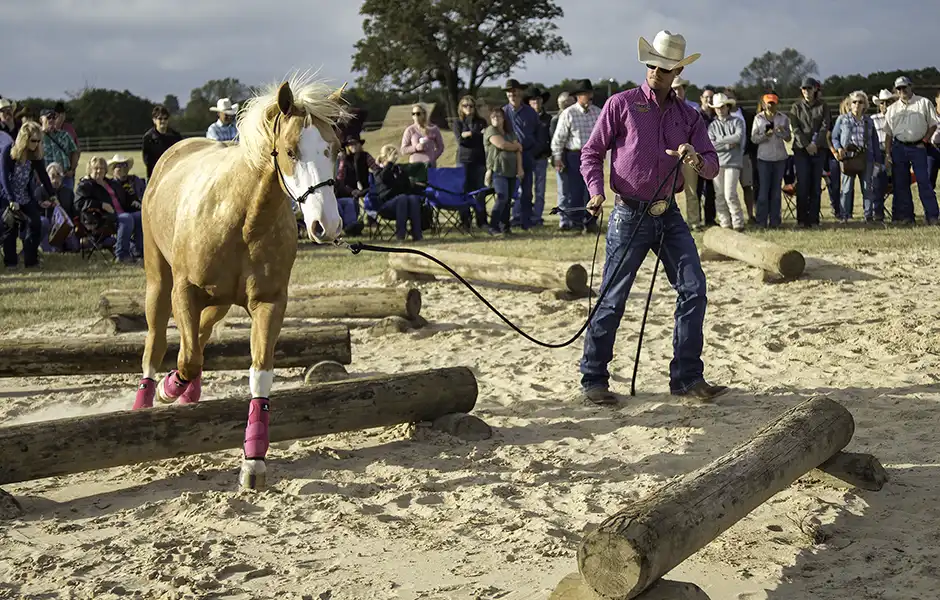
The goal for the log circle obstacle is for the horse to develop cadence in his feet to where he can walk or trot around the circle without changing speed or tripping over the logs.

One of the most important things you can encourage a horse to do when introducing him to an obstacle is let him perform his own safety check of it. Here, Method Ambassador Josh Standen waits patiently as Porsche inspects a log in the log circle.
Log Jump
Level: Beginner/Intermediate
When you’re ready to teach your horse to jump obstacles, this is one of the best obstacles to begin with because it is simple and straightforward. The obstacle’s low height and unintimidating appearance will build your horse’s confidence. As an added bonus, I had this obstacle designed with tapered ends to offer a beginning point for every horse’s ability. While I have no problem asking my young horses to jump over obstacles, I’m careful about the size of obstacles I ask them to go over. I don’t ever want to ask them to go over something that will put them in danger, injure them or be too much for them and ruin their confidence.
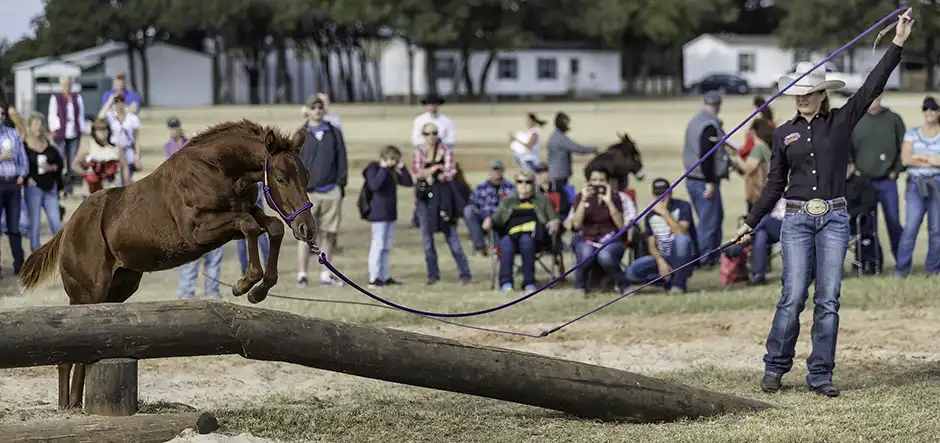
When it comes to teaching a horse to jump over an obstacle, I love to use this simple log jump. It’s not intimidating, and its tapered edges give you a variety of starting points to build the horse’s confidence.
Tip for Success
The most important thing to keep in mind when working a young horse over obstacles is to use common sense. Young horses run out of air and energy a lot more quickly than adult horses do. You need to pay attention to how your horse is doing and what you’re asking him to do.
Staircase
Level: Intermediate/Advanced
The staircase builds a horse’s confidence about jumping up and down different heights. While you’re working over this obstacle, he’ll never be quite sure what you’re going to ask him to do next. It teaches him to think on the go and builds his trust in you. This is also a great obstacle to get your horse used to seeing you from different heights. With the staircase, you can position the horse above your eye level and you can also position him below your eye level by standing on the obstacle and having him work around it.
Horses notice every little change, and when you start asking your horse to respond to your cues from a different height, he’ll likely get reactive about it and not be as responsive. With practice, he’ll learn to respond immediately and willingly to your cues no matter where or how you’re positioned. I especially love to get young horses used to seeing me above their eye level, because one of the scariest parts about being started under saddle for a horse is seeing a human moving above them. The more you can desensitize your horse to that sensation, the smoother the first ride will go.

Vixen readily hops up the staircase obstacle when Professional Clinician Kristin Hamacher asks her to.
Teeter-Totter Bridge
Level: Advanced
Most horses are initially wary of stepping on to objects that move and make a noise, and the teeter-totter bridge does both of those things. Because of that, it’s a great obstacle to incorporate into your training program to teach your horse to use the thinking side of his brain and trust you as a leader.
Be sure your horse is an expert at walking across a stationary bridge before attempting a teeter-totter. If he isn’t confident about stepping up on to a stationary bridge that makes a noise, he’s not going to want any part of going across a teeter-totter bridge that not only makes a noise but moves underneath him. Remember, always set your horse up for success.

It’s important that your horse is confident about walking across a stationary bridge before you ask him to cross a teeter-totter bridge.

It’s important that your horse is confident about walking across a stationary bridge before you ask him to cross a teeter-totter bridge.
Water
Level: Intermediate
Water is a great obstacle for getting your young horse confident about negotiating from the ground at an early age. You’ll find that if you can get your young horse crossing through or over an obstacle well on the ground, when you eventually ask him to negotiate it under saddle, he’ll go right over it without a fuss. Like with anything you teach a horse, getting him to confidently step through water starts by breaking the obstacle down into the simplest steps possible. With a water obstacle, that means starting by getting your horse comfortable stepping through a puddle. Once he can handle a puddle, move on to a shallow stream. Then to a small pond and so on. As his confidence grows, challenge him a bit more by increasing the size and intensity of the obstacle you’re asking him to go through. Don’t go from a puddle to the ocean. That isn’t fair to him and would only be setting him up for failure.
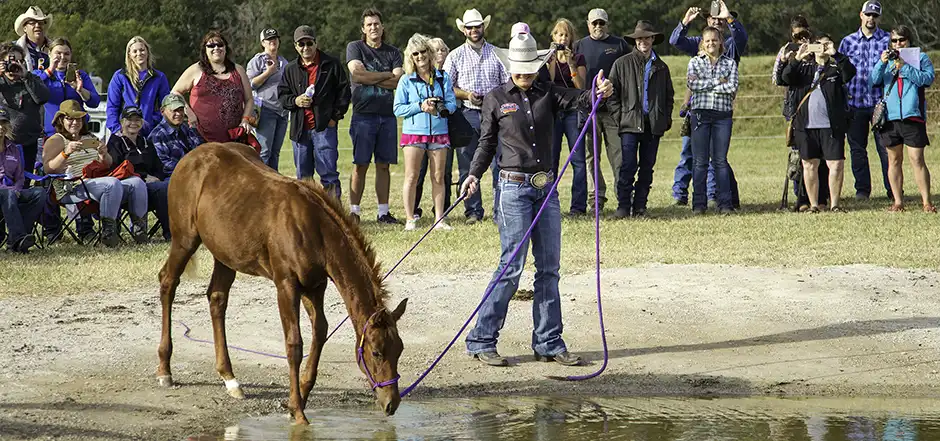

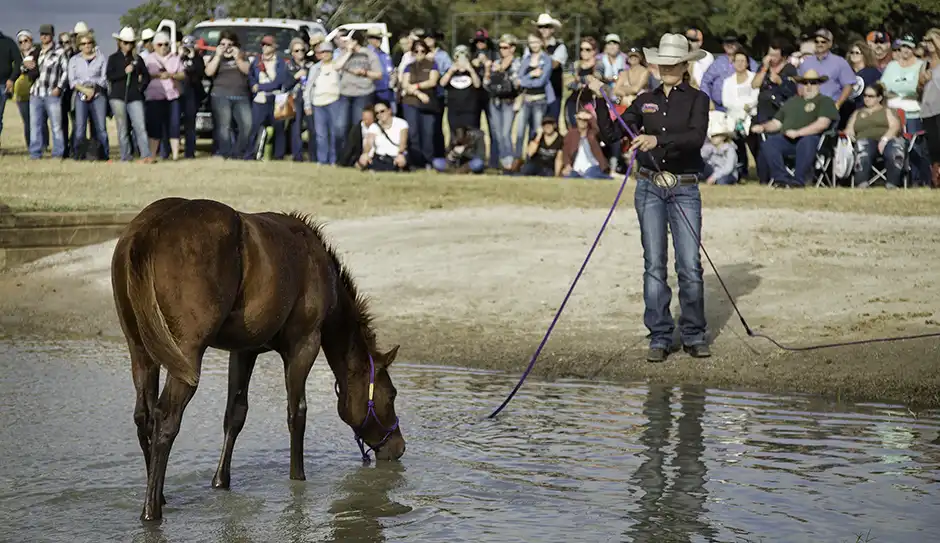
If you’re smart, you’ll work on water obstacles towards the end of a training session, when your horse is a bit thirsty and looking for a rest. Vixen walks confidently through the water and is happy to rest in it until Kristin asks her to come out of it.
The How-To You’re Looking For
The Foal Training Series covers 37 exercises and topics in detail that you need to know when raising a foal. The series is intended to be used with newborn foals through yearlings and follows the progress of two foals as Clinton teaches them groundwork exercises and day-to-day skills every horse should know.
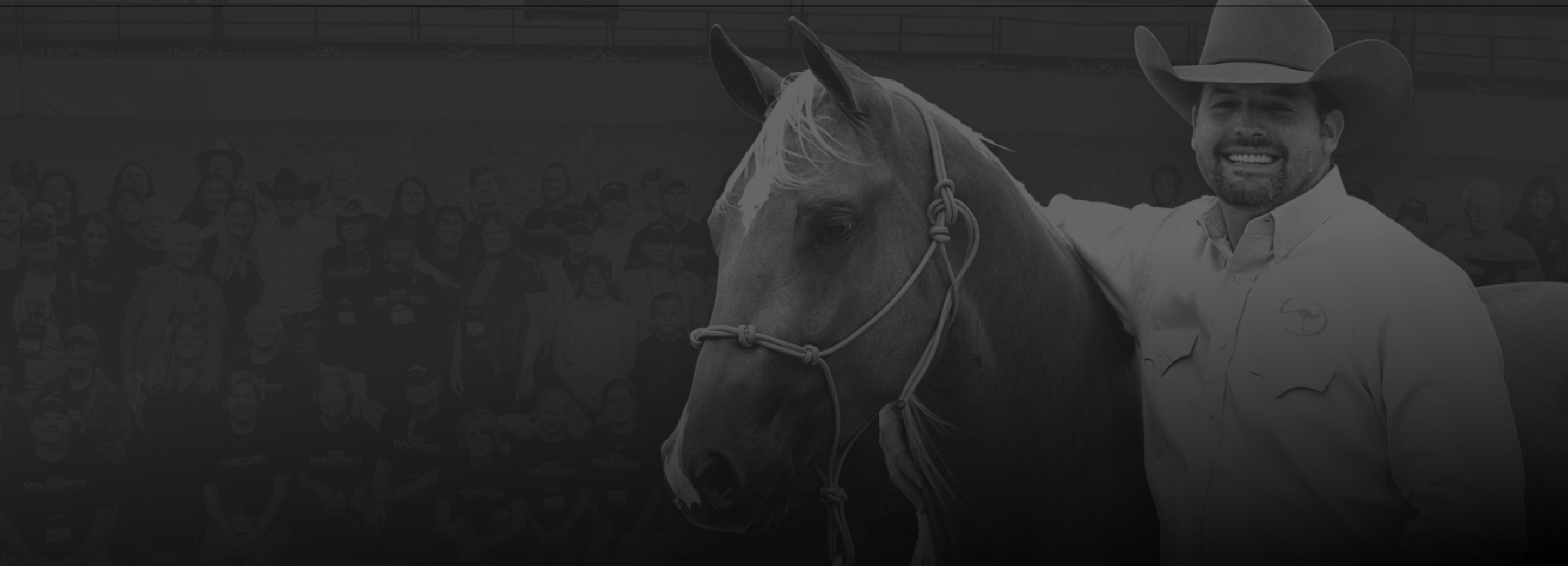
Master Your horsemanship Skills
Like these tips? Join the No Worries Club and hone your skills with thousands of hours of Clinton’s easy, step-by-step method horse training videos.



